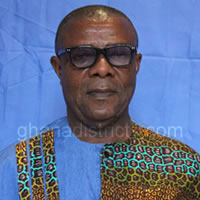Location and Size of the District
The Kwaebibirem District is located in the South-western corner of the Eastern Region of Ghana, between Latitudes 1 degree 0’W and O degree 35.’E and Longitudes 6 degrees 22’N and 5 degrees 75’S. On the North, it is bounded by the Birim North District, on the East by Atiwa District and East Akim Municipal, on the south East by Suhum Kraboa Coaltar District, and West Akim Municipal, and on the South-west by the Birim Central Municipal and on the West by Akyemansa District. The District has a surface area of about 1230 square kilometers. The location of the district in national and regional contexts.
Brief History of the District
The District was carved out of the West Akim District in November 1988 by Legislative Instrument 1425. The District has had nine (11) political heads since its creation.
The dominant tribe is Akan, though pockets of tribes like Akuapems, Ningos, Northerners Ewes and Krobos have come to settle either as farmers or miners throughout the District.
Relief and Drainage
The major mountain range, the ATIWA RANGE, is found in the North-East of the District around Dwenase and Apinamang. Apart from this area, the general climb in the District is less than 500 meters. In between heights are extensive marshlands.
The Birim River traverses the District from the North to the South. Besides the Birim River, there are other notable rivers such as Kadepon, Pram, Subinsa,Mmo and Apaam. One major feature of these rivers, except the Birim, is that large tracts of low-lying lands that are liable to flood in the rainy season bound them.
Temperature
Temperature ranges between a minimum of 26.50C and a maximum of 270C.
Rainfall
The District lies within the semi-equatorial climate zone with a double maximal rainfall regime. The highest annual rainfall of 8493.5mm was recorded in 1995. The District’s maximum rainfall period coincides with the planting season. For planning and more specifically for Agricultural activities, distribution of rainfall rather than its intensity is more relevant.
Vegetation
The District lies on the semi-deciduous forest zone and the vegetation consists of low-lying species of hardwood. Large plantations of teak have been cultivated outside forest reserves. The District has two (2) forest reserves to the east-Ayaola Forest and the West Atiwa Reserves-these together cover a very large area.
Soils and their Suitability for Agriculture
There are three major soil associations in the District that have developed over the lower Birimean soil type. These are: Bekwai-Oda Association (that is silty-clay-loamy type of soil) in the North-West and South Eastern parts of the District; Birimean-Chichiwere Association (sandy loam clay) in the North, middle and southern parts and the Atiwa-Asikuma-Ansum Association (mainly silky clay loams) in the East.
The distribution of the soils their characteristics and potentials in the District are presented in Table1 .6 The soils are important agriculturally as they are widely cultivated.
Date Created : 11/24/2017 6:06:59 AM





